We heard a rare bit of truth-telling on a webinar the other day: one of the guest speakers said:
“Content is really only relevant for our branding purposes—it’s not like it drives leads or anything. We reserve it for thought leadership, but we don’t really measure it beyond pageviews.”
Every time we hear this, a tree falls in a forest somewhere.
Okay, maybe not—but our point is that while this is a common adage, it’s wrong. Content can be a powerful thought leadership and awareness tool, but is also key for supporting performance marketing goals in some scenarios.
It’s especially important when converting customers who don’t know you well, or even at all. In fact, if you’re not supporting your performance marketing goals with content, you’re missing out.
All you need is a solid content strategy.
This means strategizing for and creating content specifically to generate leads, sales, app downloads, or other performance-related KPIs.
We’re covering everything you need to build that content strategy, including:
- Definition: what we’re all talking about when we say ‘content.’
- Goals: when it makes sense to use content for performance goals
- Analysis: products and verticals that see the most success
- Funnels: how content fits in each stage of the funnel
- Personas: how to use personas to inform the creation of your content
- Execution: tips for setting your campaign live and optimizing as you go
You’ll walk away with a framework for a performance-based content strategy, plus, we’ll (hopefully) have obliterated any notion that you might have about content only serving thought leadership or branding goals.
Definition: content for performance marketing
‘Content’ is strangely hard to define. The Content Marketing Institute defines it in broad strokes: content is information that provides a benefit to the person who consumes it.
That’s because we call everything content—that blog post you just published, the LinkedIn video that just went live, the landing pages you’re A/B testing, the one-sheet you just armed your sales teams with, the emails you send to prospects and customers—they’ve all been called ‘content’ at one time or another.
And rightfully so, they are all content, but I would argue that when marketer’s nay-say content’s impact on performance goals, they’re talking about the un-gated, long-form stuff. Namely:
- Video
- Blog articles
- Long-form landing pages
I say this because I’ve never come across anyone whose title included the words “performance” or “digital marketing” that didn’t understand the impact of ad creatives, traditional landing pages and email nurture campaigns on their performance KPIs.
Today we’re focusing on the list above to answer the question:
How do I use assets like earned media, bylines, sponsored editorial articles, videos, blog articles and longer-form landing pages to convert customers and drive sales?
Goals: when to use content for performance marketing
Landing pages typically used in performance campaigns are short, sweet and to the point, packed with CTAs for one single action, and with text that’s short, snappy and convincing.
And these landing pages obviously do perform well, or we wouldn’t all be using them. But they don’t provide any type of storytelling platform or an opportunity for you to gain the trust of a new person.
Content does, and is particularly useful when:
- You want to reach a new audience
- Your market doesn’t search for you because they don’t know your offering
- 60 characters just isn’t enough to tell your story
- You’re building your brand’s reputation
- When the hard sell isn’t working
Use content to easily capture the attention of new consumers, those who haven’t heard of you before, to whom you might have to explain yourself a bit, or those who need the soft sell—namely those who need to trust you before they make a purchase.
Taboola's Sponsored Content Checklist
Analysis: products and verticals that see the most success
We hinted at this above: content is successful at meeting performance marketing goals in two scenarios:
- For the products and verticals with longer funnels, meaning consumers need more time to consider before making a purchase
- For the the products and verticals with short funnels who want to convert people who’ve never heard of them before
To get an idea of what advertisers fall into which bucket, we took a look at how many days it took Taboola users to make a purchase for each of the below verticals, after their first click:
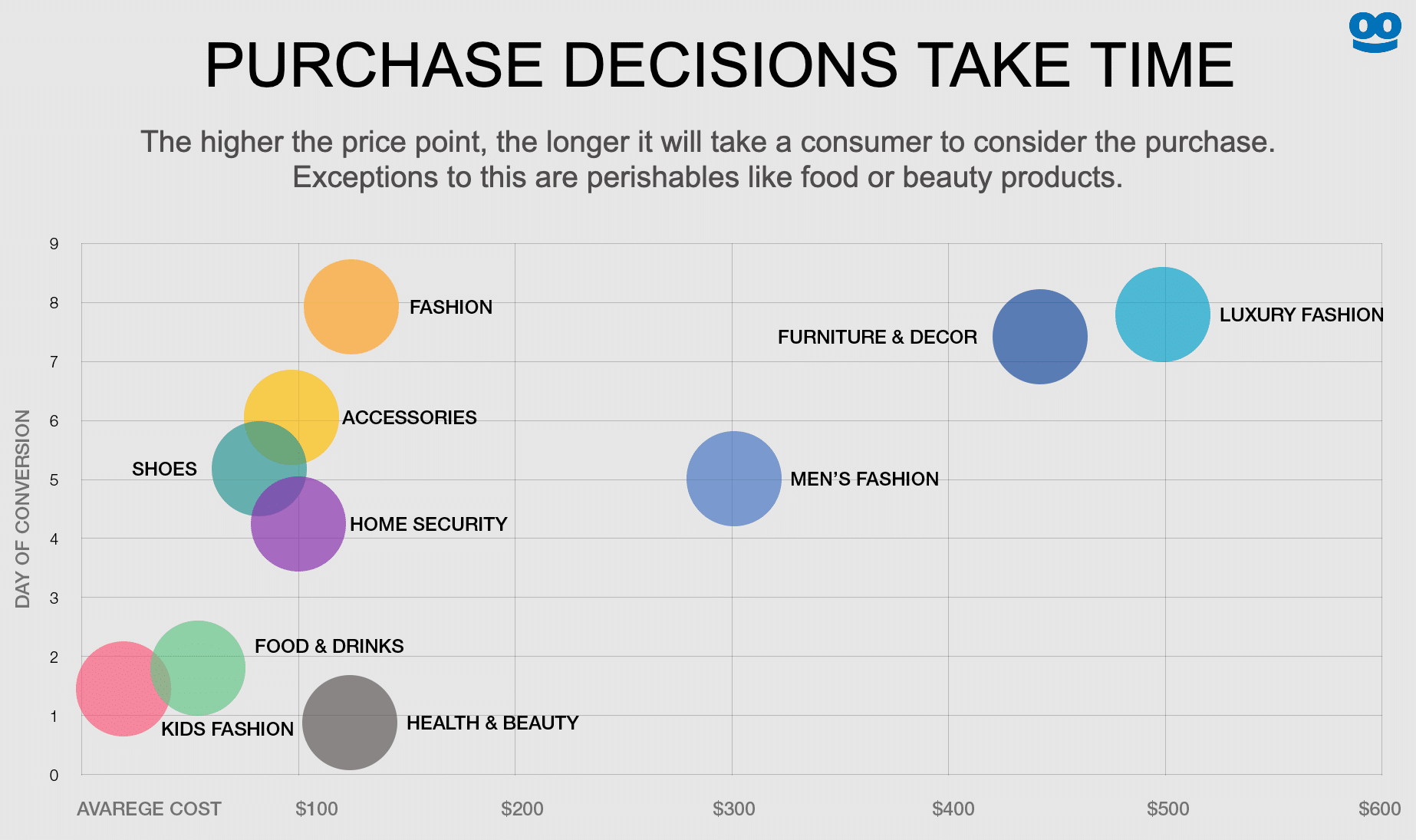
A couch or a luxury fashion item might be several hundred or thousands of dollars, whereas a new makeup item or protein bar is much cheaper, and therefore takes less time for a consumer to decide to make a purchase.
In both scenarios, content can be helpful. Take these two examples:
- Long funnel: before buying a couch, Stacey first reads an article on living room designs to inspire her. She then stumbles across a blog article on the open web, sponsored by her local trendy furniture shop. The article walks her through the couch selection process. While reading, she clicks a CTA to check out their couch selection and ends up making a purchase a week later.
- Short funnel: Derek is an avid hiker, and relies on protein bars for sustainable exercise. While reading an article on the open web about great local trails to try, he sees a long-form landing page sponsored by a company selling a new protein bar. He’s picky about ingredients, but luckily, this page explains in detail the nutrition information and the physical impact of the recipe. He makes a purchase.
Each of these consumer’s purchases were dependent on their ability to learn more about the product and brand before they made their final purchase.
The funnel and personas: how to plan for content at every stage
Funnels are kind of like fingerprints—everyone’s looks a little bit different when you take a close look—but in general, we’re all basically talking about three stages: awareness, consideration and decision.
Similarly, when we talk about buyer personas, everyone’s is different—but in general, we’re all basically looking at three factors: demographics, interests and potential to purchase.
Here’s a very basic breakdown about how each of these factors might play out in your own personas:
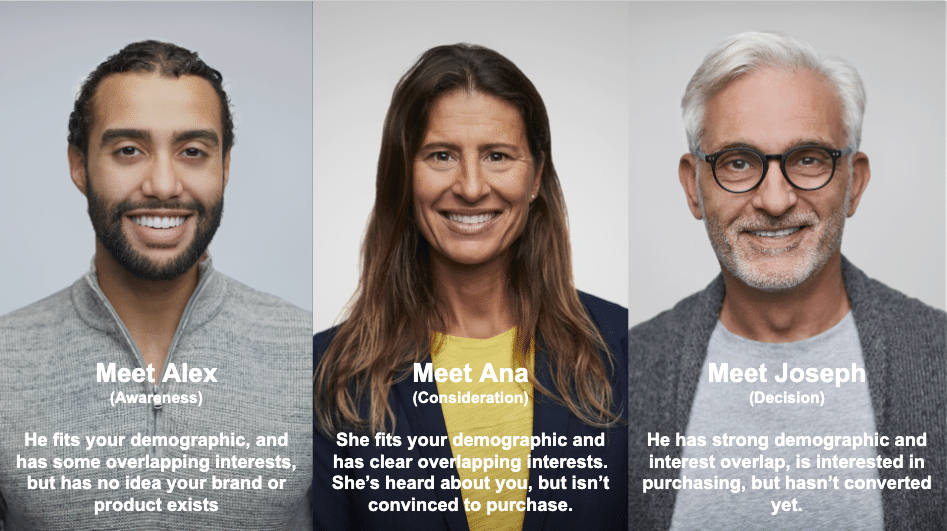
Each of these people needs a very specific type of content in order to successfully convert. To successfully convert each of them, we need to understand what they’re thinking first.
Awareness stage content strategy
Alex does fit the profile of someone who might be willing to buy, but he’s never heard from you before, and you’ll need to gain his trust in your brand and product before he converts.
These strategies could work to convert Alex.
- Target Alex with an engaging, explanatory video with overlays that prompt him to click through to a landing page.
- Convert Alex on a long-form landing page or blog article that explains your value proposition and provides a CTA to purchase or convert him as a lead.
- For those that fit the Alex persona but don’t convert right away, continue to retarget them with blog articles and long-form landing pages built for performance until they convert.
We suggest testing 1-2 video creatives and 2-3 blog articles or long-form landing pages in your campaign.
Consideration stage content strategy
Ana knows about your brand and your product, but isn’t convinced she should make a purchase yet—you’ll need a strong storytelling strategy to get her to convert.
- Target Anna with a blog article that includes multiple CTAs to prompt her to make a purchase or convert as a lead.
- For those that fit the Anna persona but don’t convert right away, continue to retarget them with long-form landing pages built for performance until they do so.
We suggest testing 2-3 blog articles and 1-2 long-form landing pages in your campaign.
Decision stage content strategy
Joseph knows who you are, and actually meant to make a purchase, but just hasn’t gotten around to it yet. Maybe he forgot about you because he’s inundated with so many other advertisements each day, or it’s not an urgent enough item on his to-do list.
- Target Joseph with long-form landing pages that remind him why your product is great, and that create a sense of urgency for purchase.
- For those consumers that fit the Joseph persona but still don’t convert, retarget them with traditional, shorter landing pages until they do so.
We recommend testing 1-2 long form landing pages in your campaign.
Execution: choosing channels and setting yourself up for success
Wether or not we’re personally open to consuming longer-form content depends on what we’re doing online. It’s all about mindset: where are consumers most open to your message:
- On search channels, consumers have clear intent. They don’t typically want to discover anything out of that scope.
- On social channels, consumers are interested in what their social circle is recommending, and if you’re not in with that crowd, they probably don’t want to see it.
- On the open web, consumers are in content consumption mode. It’s here that they’re most likely to engage with content from brands and about products they’ve never heard of or seen before. This is where discovery happens.
The open web is a major part of the everyday online user’s life. We recently surveyed 300 consumers and found that while social and search make up a bug chunk of the pie, 25% of participants spend most of their time on news and content websites.
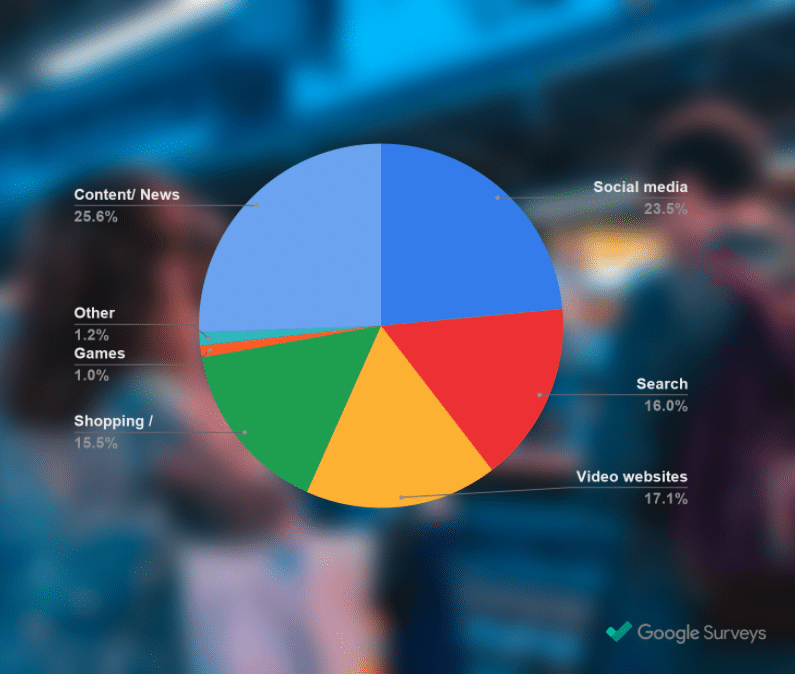
They also trust the content that’s there—63% of those respondents expect Fortune 500 companies to advertise on news sites, which we found to be especially true for those over the age of 35.
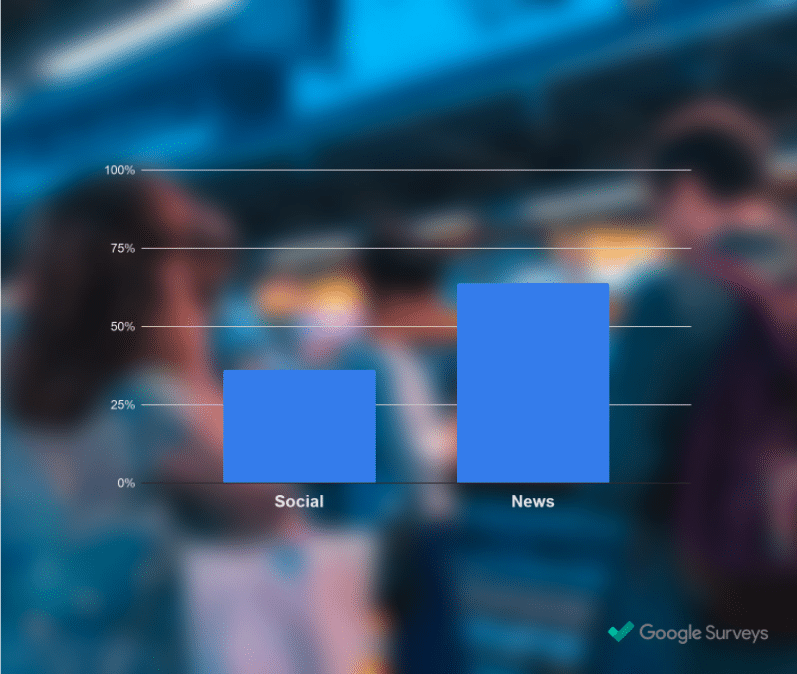
Finally, the mindset we mentioned is very real. A recent study we did in partnership with Nielsen revealed that participants were nearly 10% more open minded after reading an article online—a time period we defined as the moment of next—versus anywhere else on the page.
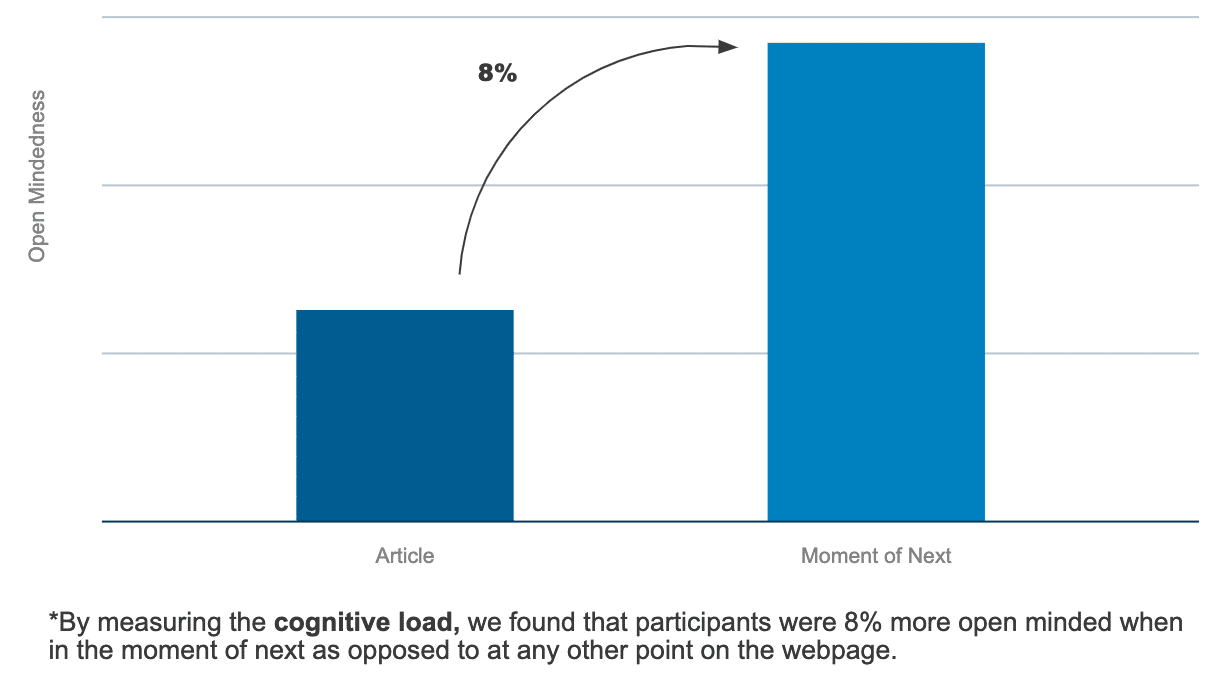
In short, reaching consumers on the open web is essential for your content-based performance marketing.
Conclusion: content-based performance marketing works when consumers need a little more storytelling
Content can easily support your performance marketing goals, with just a few adjustments:
- You’re looking to reach an audience that needs a little more storytelling
- You’ve defined your personas, and created content tailored to each persona
- You have a retargeting plan, just in case those consumers don’t convert the first time
- You’re distributing that content on a channel that will work for your goals
- You’ve set up a separate campaign for each group and URL
- You’re A/B testing various landing pages, blog articles, editorial content and videos, to optimize for your own audiences.
While your strategy is critical, your content is just as important. If you’re not providing users valuable, targeted content set in a design that sets them up for conversion, your campaign could fall apart. Check out our guide to creating content for performance marketing, here.